RIVER AND RIVER SYSTEM
Rivers are the most widespread agent of denudation. They transport and deposited material for very great distance, after hundreds and sometimes thousands of kilometers.
The amount of erosion, transportation and deposition that a river achieves depends on the flow of water through its channel and this flow is determined by several factors.
The energy which makes the flow possible, is produced by gravity, and the amount of energy that a river has is related to the gradient of its bed, to its volume and the nature of its flow and to the shape of its channel usually, the energy increases when the gradient and the volume increases.
Water in river flows in two ways
- Laminar flow (in layers parallel to the bed)
- Turbulent flow ( in a circular – like mariner)
edu.uptymez.com
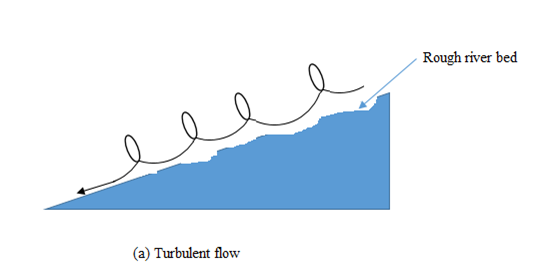
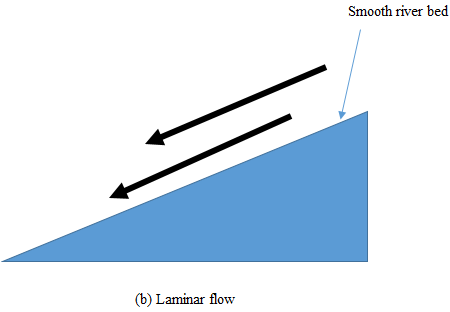
The energy of a river decreases when its flow is turbulent because energy has to be used to overcome the fuction within the water caused by turbulence.
The shapes of a channel also affect the amount of energy a river has for erosion and transport. A river uses more energy to flow through a flat, mite channel than through a narrow, deep channel because the former has a large surface area, and frictional drag is therefore greater.
In the upper part of a river’s carve the gradient of the channels is steeper but the volume of water is less. In the middle and lower part of a river’s carve the average velocity of the river is at least equal to and in some cases greater them, the velocity in the upper part. This is because of the turbulent upper part of the curve.
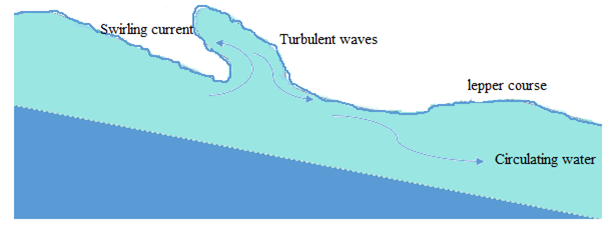
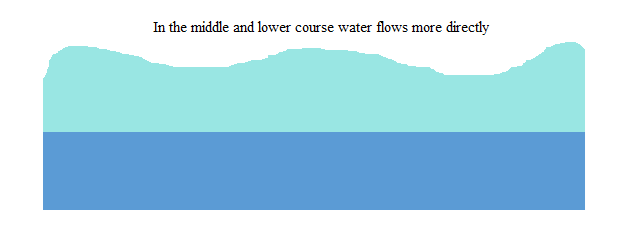
River Erosion
Involve a matrix of interacting processes namely
– Hydraulic action
– Corrosion (abrasion or Rasping)
– Attrition
– Corrosion (solution)
a) Hydraulic action
Is the process where moving water sweeps away the loose materials like silt, gravel, pebbles.
b) Corrosion, abrasion or Rasping
Is the wearing away of the bed or the banks of the river by the load carried by the river water hence the amount of load determines the nature of erosive power and the rate erosion
c) Attrition
Is the process of wearing away or breaking down of the load itself as fragments collide with each other and against the river bed.
d) Corrosion (solution)
Some minerals dissolve in water leading to the disappearance of the rocks
Hence: these four processes constitute river erosion which enables a river to cut a channel into the land and it operates into 3 ways namely.
- Head ward erosion – Is cutting back of the river and its source.
- Vertical erosion – Involves undercutting into a river bed which leads to the depending of the river valley.
- Lateral erosion – is the wearing away of the riversides
edu.uptymez.com

RIVER TRANSPORT
All the material that a river transport is called its load: A river transport its load in four ways
- By traction: ( the dragging of large piece of materials such as pebbles along its bed)
- By saltatoin ( the bouncing of smaller pieces over its bed)
- By suspension of light materials, such as silt and mud in the water.
- By solution of certain minerals which dissolve in water.
edu.uptymez.com
NB: A river loses energy when its gradient decreases when its channel widens, when it meanders (twists and turns) and when its volume decrease after a flood.
During times of flood the volume of a river increase and its energy therefore increase, which results in more erosion, which is turn leads to an increase in the river’s lead. But when the floods subside, the volume decreases and so does the energy. The river now has too great a load, its power to erode decrease and deposition takes place.
RIVER DEPOSIOTN
Deposition takes place when a river has insufficient energy to carry all its lead. The first part of the load that is dropped consists of boulders and pebbles. The last part that is dropped in fire sedimentary, called silt.
Deposition takes place at any point in a river’s course. Material is constantly being deposited, picked up again and transport to another part of the bed where it is again deposited.
Factors which influence River deposition are as follows
- Decrease of the volume of the river
- Decrease in the velocity (speed) of river water
- Presence of an obstacle
- Stagnation of water when the river enters the sea or lake or the flat land.
edu.uptymez.com
THE DEVELOPMENT OF A RIVER VALLEY
When rainfalls, some of it soaks into the ground, some evaporates and some runs off the surface the letter sometimes gives rise to stream which liter join together to form rivers. Although a river can also develop from a spring or a lake or mass of ice most rivers start in upland regions where rainfall is usually high through ant the year.
The surface run – off forms small streams in the area where a river beings. The internal streams join together to give a river. The juretion of two streams or of a stream and a river or of two rivers is known as a confluence. When a smaller flow (earth a stream or a river) joins a large flow, it is called a tributary.
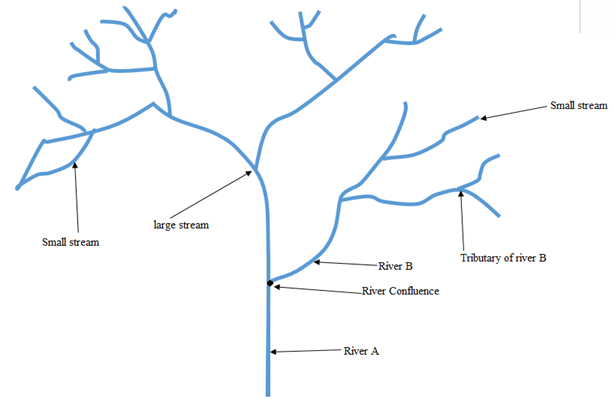
The erosion power of a river depend on its volume and its gradient and as we have already seen. This power changes whenever there is a change in the volume or the gradient.
A river erodes to its level, i.e. the lowest level to which a river can cut vertically. The base level may be the confluence with another river, the surface of a lake or the surface of the sea.
All base levels are temporary except the sea which is the ultimate base level.
If the draw a line following the course of a river from its source to its month, this line is called the long profile of the river. This line usually has a concave slope.
THE LONG PROFILE OF THE RIVER
The profile a river is always changing. For example, if a river does not have a fall load in one reach (a reach is the name gives to any part of a river’s course) then the river will erode its bed. This results in addition of eroded material to the load. This erosion of the river’s bed described as degrading the bed. Never, erosion decreases in the lover part of the reach because more energy is needed to transport the increased lead. Thus the gradient is less steep and there is a decrease in the river’s velocity. Eventually to velocity of the river in that reach enables erosion to balance deposition. This means that the amount of material removed from the river’s bed is abort equal to the amount deposited on it. On the other hand, position will take place if the river enters as reach whoso gradient is less steep than that of the reach it has just left. This will course the river’s velocity to decrease and part of its land will be deposited. This deposition on the river’s bed is described as aggrading the bed, and it results in the gradient being steepened causing the velocity to increase again. This recurrent action of erosion and deposition on a river’s bed can be summarized as follows.
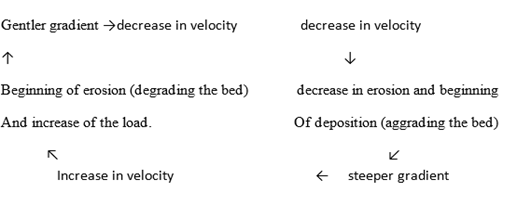
The long profile is really made up of a series of part, each of which is balanced the factors velocity, depth, width and discharge. If one of these factors changes, then all of the remaining factors will be affected. It is sometimes possible to divide the long profile into stages/sections.
STAGES IN THE LONG RIVER PROFILE
When the river profile develops it leads to the emergence of stages if the river namely young or upper state, mature or middle stage and Old or lower stage.
Each section or stage has its characteristics where these features vary due to the variation in the rocks structure, topography and nature of erosive process.
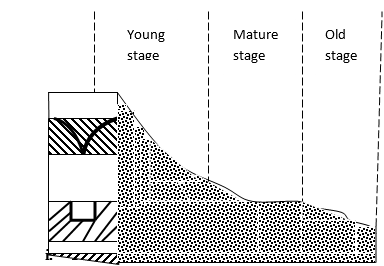
- YOUNG STAGE/ UPPER SECTION
edu.uptymez.com
It is called a youthful stage or torrential stage it is a stage where sources of the river can be traced, in this stages the river is very fast and erodes, vertically forming V – shaped valley. The river becomes very powerful due to its high speed.
– Has steep slope
– River flows through later locking spums
– Has rapids and water falls( waterfalls are sudden flows of water)
Condition leading to the formation of waterfalls
- The water falls can be formed where the hard rock layer lies horizontally or the soft rock layer, the water erodes the soft rock layer
edu.uptymez.com

- When the hard rock dips gently upstream
edu.uptymez.com
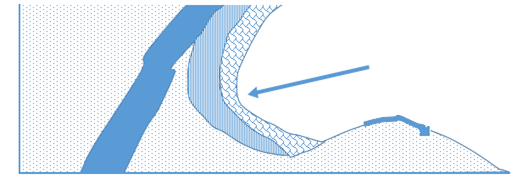
- When hard rock stands vertically
edu.uptymez.com
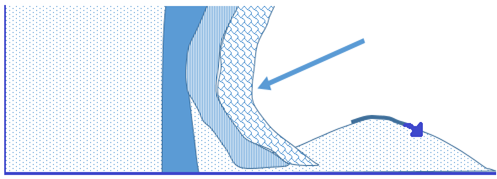
- Waterfalls can develop along the edge of steep sides of the plateau
edu.uptymez.com
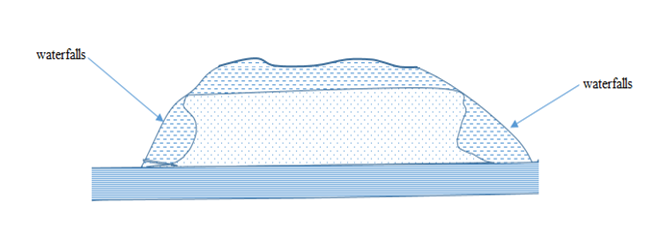
- MATURE STAGE/ MIDDLE SECTION
edu.uptymez.com
It’s also know as valley stage, whose valley are widened by the process of lateral erosion, at this stage the speed of the river is slower, many tributaries are developed joining main river, which again increase the volume of water, meander’s develops, cliffs are developed across the river or valley floor.
- OLD STAGE/ LOWER SECTION
edu.uptymez.com
It is also referred to as the plain stage its main features are development of flood plain, braided stream, meanders, ox Bow Lake, and levees, deferred tributaries, lagoons and estuaries. When a river reaches old stage, the land is almost flat and its speed is very slow such that the main task is Deposition because the volume of the river is at its maximum due to addition of more attributes when course materials are deposited first and five materials are deposited at least in the rivers mouth.
The meanders are more pronounced than in the middle stage.
Characteristics of Old Stage are
- Formation of the braded river resulted from silt deposits into small channels (braids)
edu.uptymez.com
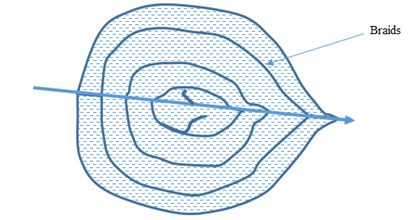
- Formation of flood plain due to the deposition of alluvium (silt and sand).
- Natural levees
edu.uptymez.com
These are ridge like or embankments produced as a result of deposition of sediments along the banks of the river in the flood plain.
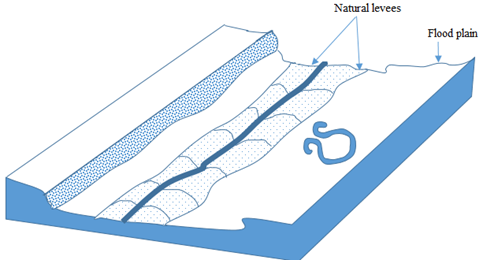
- Ox bow lakes (cut – off)
edu.uptymez.com
Are cut off meanders formed as a river cuts through the necks
Ox bow formation
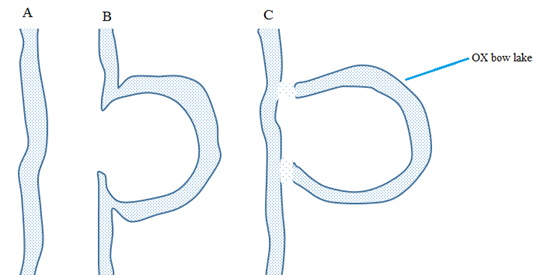
1) At A the river has just developed meanders
2) At B the meanders has become more pronounced forming a loop
3) At C a river has at through a neck isolating at a bend, which later former an Ox bow lake.
- Deferred Tributary (Yazoo stream)
edu.uptymez.com
Is a tributary is a lower course forced to flow alongside the main valley or (consequent) valley. For long distance before joining the main stream.
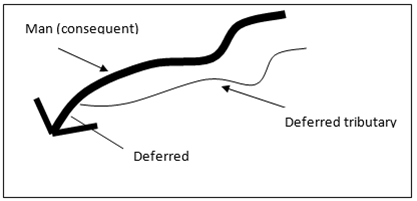
- DELTA
edu.uptymez.com
A delta is a low – lying swampy plain which gradually becomes colonized by various typed of plants. It formed when load carried by rivers is eventually deposited in the oceans, the seas and the lakes into which rivers drains. Sometimes the deposited load is carried for way from the mouth of a river before it sinks to the bottom, but sometimes the deposited load sinks to the bottom in the mouth of the river when this happens, layer upon layer of sediments may collect to form a gently sloping platform. In time, the platform may extend up to the surface and above, when it is called delta.
For the formation of a delta the following conditions are necessary
- A river must have a large load
- The velocity of a river must be sufficiently low to allow most of its load to be deposited in the river’s mouth.
- The river’s load must be deposited faster they it can be removed by the action of tides and currents. The river Congo has a large load but high velocity near its mouth which enables most of its load to be carried for cat to sea thereby preventing the formation of a delta. The River Niger also has a large load, but its velocity near its mouth is low. Much of its load is deposited in its mouth where an extensive delta has formed.
edu.uptymez.com
There are stages in the formation of a delta in an ocean or sea.
In stage 1: Depositions in the river’s math cause the river to divide into several distributaries. The delta beings to form when the initial sediments collect on the continental shelf around the river’s mouth. As the deposition continues, layer upon layer, a low platform develops. Reposition on the banks of the distributaries produces levees and the areas of water bounded by distributaries become the sites for feature lagoons.
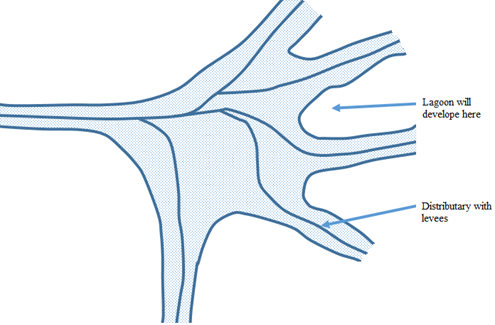
In Stage 2: Some lagoon has already begun to fill with sediments which cause further division of distributaries into small distributaries. The delta has a more solid appearance. Though it is still very swampy and is usually well covered with water loving shrubs and trees.
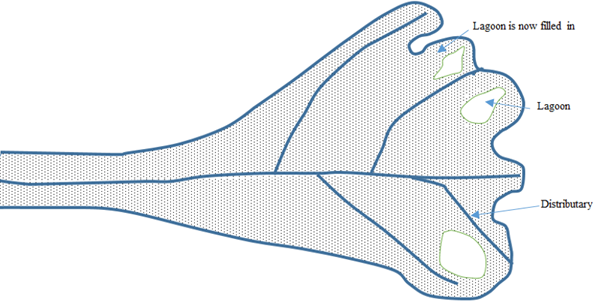
In stage 3: further in filling of lagoons plus the growth of a complete covering of vegetation results in the older parts of the delta coming to stand above water level and form dry land.
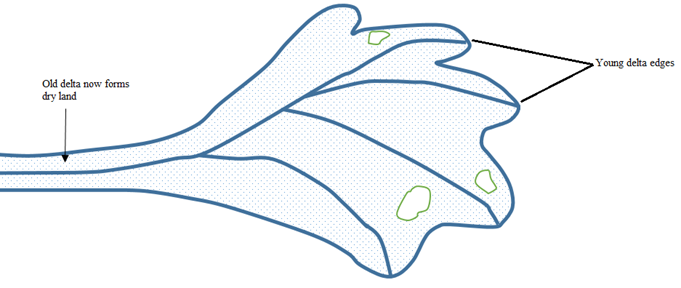
A delta’s size and shape depended the type and amount of deposited sediments and also on the power of waved and currents. There are basic types of delta
1. Arcuate; this delta consist of both course and fine sediments and its has the shape of an inverted cone. It is crossed by numerous distributaries. God examples of this type are the deltas of the Niger, the Nile the Ganges, the Indus and the Hwang – Ho
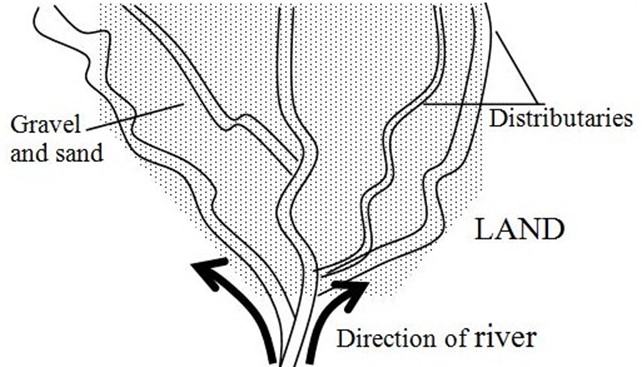
2 . Bird’s foot. This delta consists of very fine material, called silt and it has a few long distributaries bordered by levels that just out from the share. This type formed when power of the waves and currents is low. Example the Mississippi Delta.
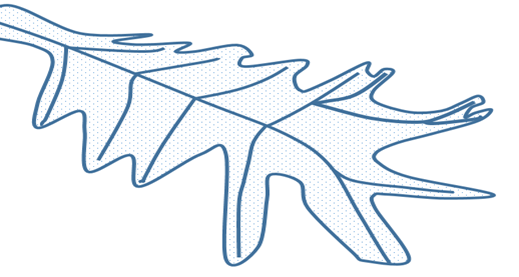
3. Estuaries. This delta is formed from materials deposited in the submerged mouth of a river. It takes the shape of the estuary.
4 . Cuspate delta – This is a delta which looks a tooth-shaped feature. It is formed when a rive drops sediment onto a flat, straight shoreline with strong waves. Waves force the sediment to spread outwards in both directions from the river’s mouth, making a pointed tooth-like shape with sides curved by regular opposing, gentle water movement. A cuspate delta extends to the sea as a V shape with long curving sides. Examples of such a deltas are Ebo in Spain and Tiber in Italy.
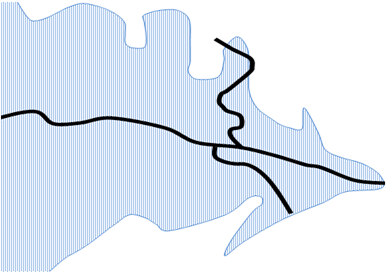
River Rejuvenation
Is the process where a river is renewed after being affected by fall in the sea level land uplift and subsidence and the increase in the river volume.
Hence: River rejuvenation is caused by
a) Fall in the sea level (Eustatic change) which is done by earth movement trough diastrophic disturbances.
b) Land uplift and subsidence / isostatic change
c) The increase in the river volume, when the river volume increase power also increases due to heavy rainfall or snow melting.
TYPES OF RIVER REJUVENATION
Rejuvenation can be categorized as Dynamic or static rejuvenation
i) Dynamic rejuvenation
Rejuvenation – Is brought about by either sea level change or land level change. Hence can be again categories into.
- Eustatic rejuvenation
edu.uptymez.com
It is due to the change in sea level
- Diastrophic rejuvenation
edu.uptymez.com
Is due to by land uplift subsidence and flitting caused by faulting.
ii) Static Rejuvenation
Is the type of rejuvenation caused by the increase in the river volume due to either heavy Rainfall or melting of ice or river captures.
Effects of River Rejuvenation
River rejuvenation leads to the following features
- Knick point (rejuvenation head)
edu.uptymez.com
Is the break of slope in the long profile of the river valley.
- Paired Terraces
edu.uptymez.com
Are steps or benches on either side of the river valley formed as a result of undercutting of the river.
- Incised meanders
edu.uptymez.com
Are steep sided curved bends of the river valley produced as result of undercutting of the river bed. Incised meanders are of two types.
- Ingrown meanders
edu.uptymez.com
Meanders are asymmetrical sides of a cross profile of the river
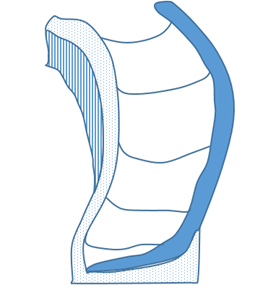
- Entrenched meanders
edu.uptymez.com
Is a steep sided symmetrical meanders with sides stand vertically and parallel to each other it is produced by vertical erosion
- Incised meanders Terraces
edu.uptymez.com
Involves services of terraces along the incised meanders produced by vertical under cutting in the river valley that has undergo rejuvenation. It produces features like
- A waterfall drops sharply from the knick point.
- Canyons and gorges
- Valley within a valley. Is a new valley formed within the former pre existing valley.
edu.uptymez.com
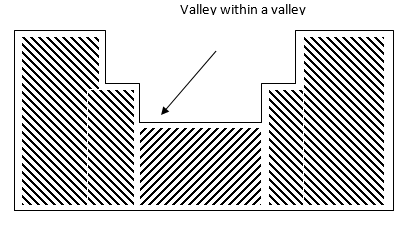
RIVER CAPTURE
River capture (River piracy) – Is a process whereby one river diverts the course of the other neighboring river into its own course.
It’s happen when there are two adjacent rivers and one is more powerful than other, then the more powerful river may capture its weaker neighbor. For this to happen, the more powerful river must flow at a lower level and it must erode its channel, both head ward and vertically, at a faster than its neighbor. This can take place when the more powerful river flows over rocks that are easy to erode or when it flows down a steeper slope than its neighbor. If either of these conditions occurs, then river capture takes place.
Conditions Necessary for River Capture to Occur
River capture occurs when is existence of the following condition
i. The capturing river should be stronger or must have greater energy for the vertical and head ward erosion than the other.
ii. The capturing river must be flowing at a lower and usually steeper gradient that its victims.
iii. The capturing river must be flowing over easily eroded, rocks that are weaker rocks.
NB: river capture is common in the trellised pattern where there is faulting
Feature Due to River Capture
i. Elbow: This bend produced where the river has been diverted (changed). However not all right angled bends in rivers are due to river capture.
ii. Misfit (under fit stream): Beheaded stream heaving slot head water due to river capture and has been reduced in volume such that it becomes too small for its valley.
iii. Wind gap (Dry valley): The valleys of the beheaded stream below the point of capture or elbow and may be filled up with gravel or alluvium.
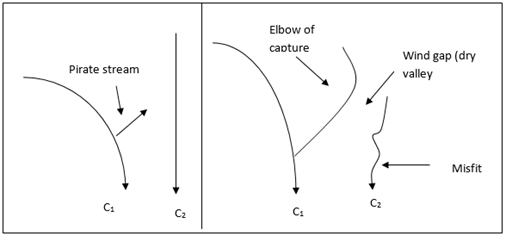
Examples of River Capture in Africa
i. Tiva River Capture in Kenya
ii. Cunene River Capture in Angola
iii. Nsaki River Capture in Ghana
iv. Imo River Capture in Nigeria